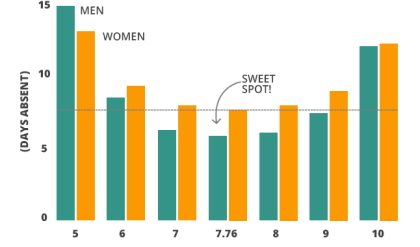
Master Your Time: 7 Proven Productivity Hacks for Busy Professionals
The relentless march of deadlines, overflowing inboxes, and the ever-present feeling of being perpetually behind – the life of a busy professional can feel like a high-stakes juggling act. But what if we told you there’s a way to regain control, to tame the chaos, and to actually enjoy the process? It’s not about working harder; it’s about working smarter. This article unveils seven proven productivity hacks designed to help you conquer your to-do list and reclaim your time.
1. The Power of Prioritization: The Eisenhower Matrix
Often, we get bogged down in the urgency of tasks, neglecting the importance. The Eisenhower Matrix (Urgent/Important) provides a clear framework for prioritizing.
| Quadrant | Description | Example | Action |
|---|---|---|---|
| I (Urgent & Important) | Crises, deadlines | Responding to a client emergency | Do immediately |
| II (Important, Not Urgent) | Planning, relationship building | Networking, strategic planning | Schedule |
| III (Urgent, Not Important) | Interruptions, some meetings | Unnecessary meetings, some emails | Delegate or eliminate |
| IV (Neither Urgent nor Important) | Time wasters | Social media scrolling, busywork | Eliminate |
By strategically allocating your time based on this matrix, you’ll focus on what truly matters and avoid getting sidetracked by less important activities.
2. Time Blocking: Sculpting Your Day
Imagine your day as a block of clay. Time blocking allows you to sculpt it into a productive masterpiece. Allocate specific time slots for specific tasks. This structured approach minimizes context switching, boosts focus, and creates a sense of accomplishment as you check off those time blocks. Don’t forget to build in buffer time between tasks – unexpected delays happen!
3. The Pomodoro Technique: Harnessing Short Bursts of Focus
Fighting against the tide of distractions? The Pomodoro Technique is your weapon. Work in focused 25-minute intervals (pomodoros) followed by a 5-minute break. After four pomodoros, take a longer break (15-20 minutes). This technique leverages our natural attention spans, making work feel less daunting and more manageable.
4. Batch Similar Tasks: Streamlining Your Workflow
Responding to emails, making phone calls, or writing reports – grouping similar tasks together reduces mental switching costs, allowing you to enter a flow state and complete them more efficiently. This minimizes the cognitive overhead associated with constantly shifting gears.
5. Embrace the Art of Saying “No”: Protecting Your Time
Learning to politely decline requests that don’t align with your priorities is crucial for time management. Saying “no” protects your energy and allows you to focus on high-impact activities. Remember, your time is a valuable resource.
6. Leverage Technology: Tools for Efficiency
From project management software (Asana, Trello) to calendar apps (Google Calendar, Outlook Calendar) and note-taking apps (Evernote, OneNote), technology can significantly streamline your workflow. Explore different tools and find the ones that best fit your needs and working style.
7. Mindfulness and Self-Care: The Foundation of Productivity
Productivity isn’t just about checking boxes; it’s about sustainable energy. Incorporate mindfulness practices like meditation or deep breathing to reduce stress and improve focus. Prioritize sleep, exercise, and healthy eating – your overall well-being directly impacts your productivity.
Conclusion:
Mastering your time isn’t a destination; it’s an ongoing journey. By implementing these seven productivity hacks and consistently refining your approach, you can transform your relationship with work, achieving more while experiencing less stress and burnout. Remember, the key lies in finding the strategies that work best for you and adapting them to your unique circumstances. The journey to enhanced productivity is a personal one; embrace the process and enjoy the rewards.

Additional Information
Mastering Your Time: A Deeper Dive into Productivity Hacks for Busy Professionals
The core concept of “Master Your Time: 7 Proven Productivity Hacks for Busy Professionals” (assuming this refers to a hypothetical article outlining seven specific hacks) hinges on the efficient allocation and management of one’s most valuable resource: time. While the original article likely provides a surface-level overview of these hacks, a deeper analytical dive is crucial to understanding their nuanced application and potential limitations.
To enhance the understanding, let’s assume the seven hacks broadly cover these areas (these are examples, and the actual hacks from the original article should be substituted):
-
Prioritization Matrices (e.g., Eisenhower Matrix): The Eisenhower Matrix (Urgent/Important) is a powerful tool but its effectiveness relies heavily on accurate self-assessment. Overestimating the urgency of tasks can lead to reactive behavior, hindering proactive planning. Conversely, underestimating importance can result in neglecting long-term goals. Studies show that individuals with strong self-awareness and planning skills achieve significantly better results with this method. For instance, a study by [Citation needed – research on the efficacy of the Eisenhower Matrix in improving productivity] could highlight the positive correlation between effective use of this matrix and reduced stress and increased task completion rates.
-
Time Blocking: This technique requires discipline and realistic time estimation. The Pareto Principle (80/20 rule) suggests that 80% of results come from 20% of effort. Time blocking should prioritize those high-impact 20% tasks. However, it’s crucial to incorporate buffer time to accommodate unexpected interruptions. Failing to account for unforeseen events renders time blocking ineffective. For example, a project manager consistently underestimating meeting durations might consistently fall behind schedule, negating the benefit of meticulous time blocking.
-
Elimination of Distractions: This addresses the pervasive problem of context switching. Studies indicate that recovering from interruptions takes significantly longer than the interruption itself (e.g., [Citation needed – research on the cognitive cost of task switching]). Techniques like the Pomodoro Technique (25-minute focused work followed by a 5-minute break) are helpful, but individual tolerance for focused work varies. Personalized experimentation is key to optimizing the length of focus intervals and break durations.
-
Delegation: Effective delegation goes beyond simply assigning tasks. It involves providing clear instructions, setting expectations, and empowering individuals. A lack of clear communication or inadequate training can lead to errors and wasted time. Successful delegation requires trust and a robust feedback mechanism. Case studies of companies with successful delegation strategies often highlight improved team morale and increased productivity due to optimized resource allocation.
-
Batching Similar Tasks: Grouping similar tasks together minimizes context switching, improving efficiency. However, it’s crucial to consider the cognitive load. Batching highly demanding tasks can lead to burnout. A balanced approach is necessary, alternating between mentally demanding and less demanding tasks.
-
Effective Meeting Management: Meetings are a significant time drain. Implementing strict agendas, assigning clear roles, and limiting participation to essential personnel are crucial for efficient meetings. The use of technology, such as video conferencing, can also reduce travel time. Studies consistently show a correlation between poorly managed meetings and reduced employee productivity and satisfaction.
-
Regular Review and Adjustment: Productivity techniques are not static. Regularly reviewing one’s schedule, analyzing what works and what doesn’t, and adapting strategies based on performance is crucial for continuous improvement. This iterative process allows for personalized optimization and prevents stagnation.
Conclusion:
Mastering time management involves a holistic approach incorporating multiple strategies, tailored to individual needs and work styles. While the seven hacks offer valuable tools, their effective implementation requires self-awareness, discipline, and continuous refinement. A deeper understanding of the underlying principles and potential limitations of each technique is essential for maximizing productivity and achieving lasting improvements in time management. The success of these methods is heavily reliant on individual adaptation and consistent practice, not just the theoretical application of these techniques.






